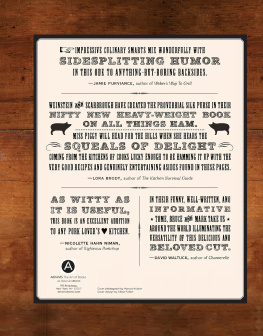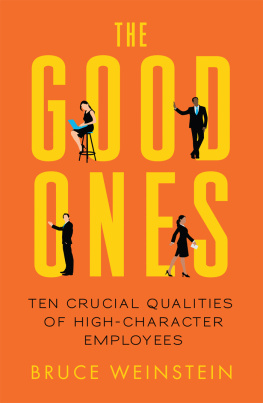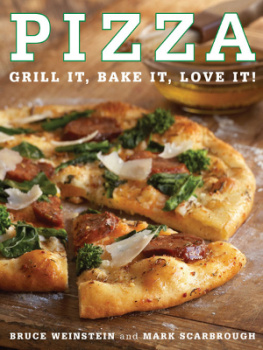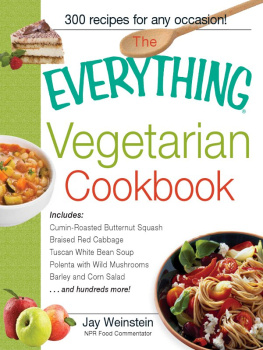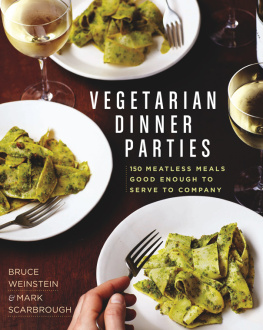Contents
Guide
Page List



CONTENTS

FRONT END
THIS LITTLE PIGGY WENT TO MARKET
TAIL END
THIS LITTLE PIGGY WENT ALL THE WAY HOME


Ours is a mixed marriage. Im a Southerner from sharecroppers and Civil War soldiers; Bruce is a New Yorker from Torah scribes and kosher butchers. It all works because Baptists eroticize Jews and Jews eroticize ham.
It also works because after fifteen cookbooks together (not counting the ones for persnickety celebrities who insist on confidentiality agreements), we have a distinct division of labor: He cooks, and I write.
Its not that I dont cook. One look at me and you know I shant starve. And its not that we dont conceptualize the recipes together. Some of our best fights have been over brown sugar.
Look, I find it can add a cloying gooeyness to chocolate. Not always, mind you. Just sometimes.
And Bruce? The more brown sugar, the better.
So in the middle of concepting out the recipes for The Ultimate Brownie Book, right on the busy corner of 7th Avenue and 21st Street in New York City, we descended into a full-throttle yellfest that included such delights as you dont understand a thing about baking and you never value anything I say.
Just as things were getting really dire, Bruces seventy-something shrink walked by. (These things can only happen in New York.)
You boys OK? she asked.
We both nodded and took a breath.
See you Tuesday, she said to Bruce as she crossed the street.
We paused a beat and went right back at it.
Anyway, our division of labor has come about because of our backgrounds: He once studied cheffery at Johnson and Wales, and I once taught freshman English at the University of Wisconsin, Madison.
So for the past decade, Bruce has been in the kitchen, trying out new ideas, new techniquesa steady stream of dishes. He likes to play with his food. And since nothing gives him more pleasure than roasting meat, this book was his joy: sweating joints all day long. He bustled through the recipes, humming and happy. Ever busy, hes the one with the Protestant work ethic. Dont get me started. I, a true son of the South, prefer to laze about on my ample ass reading novels.
One June morning, after a grueling session with Henry James, I walked into the kitchen to find him pan-frying a whole ham (for the results, see Jamn del Pas, ). Later, after spending an hour in a Flannery OConnor chat room, I caught him trying to shove a twenty-four-pound ham into a ten-gallon tub. And around Thanksgiving, when I was putting together a series of highbrow Auden poems to read before the meal, I watched in horror as he shaved the mold off a country ham.
Perhaps Im getting ahead of myself. Beyond writing, my other role in this culinary circus is to research our more arcane interests in food. And that innate curiosity is really how these two little piggies went to market to buy more hams than you can imagine.
It started like this: One afternoon in late winter, I found myself reading some fascinating websites about American country ham. (You toggle your browser fast enough between Eudora Welty and porn, and itll happen to you, too.) To be honest, I hadnt thought much about ham. Sure, when I was a kid, it showed up at every holiday that marked the coming or going of the Messiah. But a ham was otherwise a blank centerpiece: sort of like a turkey but with more provenance, more Southern atmospherics, more cultural foofaraw, as well as an aggressive, in-your-face meatiness, proving all that pretension was nothing but folderol.
It wasnt that I knew zilch about ham. For one thing, Id been on way too many press trips and always dreaded that moment when some PR shill would open her eyes really wide and say, Now we get to taste the ham. Its always the climax of the prescribed food tourand of almost every travel show, too, from Rick Stevess Im-right-on-schedule adventures to Anthony Bourdains slouched ramblings: Ah, the ham of blah-blah-blah thats smoked over thus-and-such from pigs who only eat this-and-that.
And no wonder. Ham is succulent and sweet, an Easter lunch as well as a summer picnic, a winter dinner and a barbecue favorite, good on sandwiches, great on pizza. Its the subject (or object) of rifle shoots in New England, cook-offs in Kansas City, and a host of culinary fetishessome written, some photographed, and some better left undocumented.
As I trawled the websites that afternoon, I was again struck by how ham is such global farea local icon, a national treasure, a talisman of terroir: Italian prosciutto crudo, Portuguese presunto, Basque jambon de Bayonne, Chinese Jinhua hams. By one count, there are more laws governing the production of the various jamn in Spain than there are those covering that nations transportation network.
Soon enough, I scraped back my chair, roused the collie, and ambled into the kitchen, where Bruce was emptying the dishwasher. (Ah, marriage.) What do you think about ham? I asked.
Other than liking it?
No, I mean, what do you know about it?
Bruce launched into a discussion of brines, of curingbut soon got tangled up in smoked versus unsmoked, wet versus dry, nitrates versus not, American versus European, and so forth.
Theres a lot to it, he finally said.
Id like to know more.
He nodded.
Dont be scared, I added. I once told him I wanted to eat never-been-frozen shrimp, and we ended up on a 2,500-mile car trip to Newfoundland.
Im not.
You used to be. Another time I told him I didnt want to sit around all summer in the East Coast heat, and we somehow landed in Morocco.
After thirteen years together, Im immune to it.
Theyre giving shots for everything these days.
OK, he was game. But first things first. If we were going to get anywhere, we had to nail down a definition of ham. In general, that is. What is ham?
We frothed up a couple late-afternoon lattes, got down a shelf of culinary reference books, and hammered out this definition:
Composed of four muscles, a ham is one back haunch (the butt cheek, if you will) and upper back leg down to the shank (the shin, in butcher parlance) of a pig, boar, shoat, or other porcine-ish animal. (For a diagram, see .)
From this followed three immediate conclusions:
Every pig or pig-ish animal has two hams.
A ham need not be smoked or cured in any way.
The haunch of any other animal is not a ham.
During the ensuing months, we came across other backsides referred to as hams, but these seemed to violate the spirit of the word. Yes, you can make deer or elk prosciutto from their haunches, and you can make duck prosciutto from a duck breast, but youd never call a duck breast a ham. The product does not define the producer. Otherwise, my parents would be gay.

